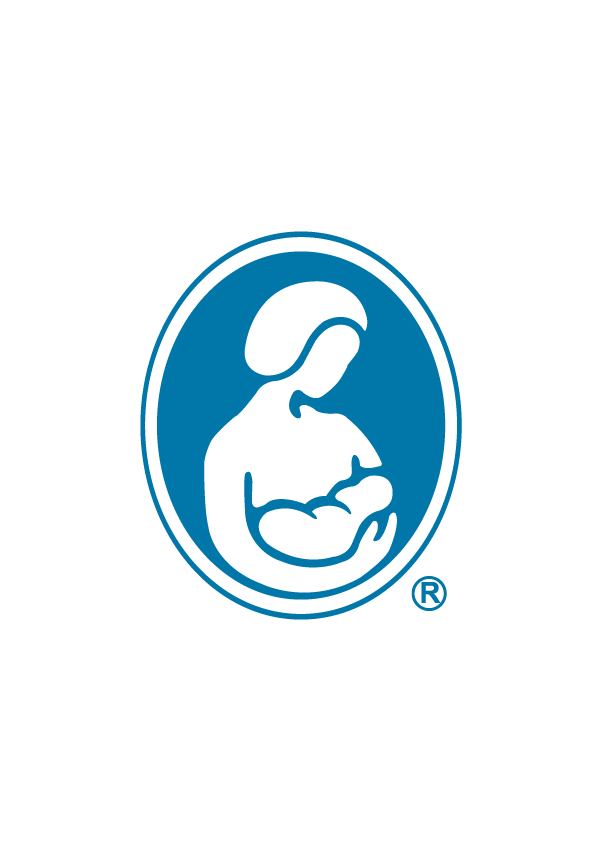免责声明:
以下的哺乳资源和链接不是源自或不代表国际母乳会,不过对您可能有用。
By NICHOLAS D. KRISTOF作者:尼古拉斯·克里斯托弗(本文作者是《纽约时报》专栏作家,美国著名记者,曾获两届普利策新闻大奖)
Published: June 22, 2011
What if nutritionists came up with a miracle cure for childhood malnutrition? A protein-rich substance that doesn’t require refrigeration? One that is free and is available even in remote towns like this one in Niger where babies routinely die of hunger-related causes?
假如有一天,营养专家开发出一种治疗幼儿营养不良的魔药,一种无需冷藏、富含蛋白的食物,即便在婴孩经常因饥饿导致死亡的非洲尼日尔偏远小镇等地,它仍能以免费的形式供应——假如这一切发生,会出现怎样的情形?
Impossible, you say? Actually, this miracle cure already exists. It’s breast milk.
你认为不可能吗?实际上,这种神奇的物质确实存在。那就是母乳。
When we think of global poverty, we sometimes assume that the challenges are so vast that any solutions must be extraordinarily complex and expensive. Well, some are. But almost nothing would do as much to fight starvation around the world as the ultimate low-tech solution: exclusive breast-feeding for the first six months of life. That’s the strong recommendation of the World Health Organization.
一想到全球贫困,我们有时会设想这些挑战如此巨大,所以任何的应对之策也必然极为复杂和昂贵。怎么说呢,有些的确如此。不过在对抗全球饥荒的问题上,没有什么这种技术含量极低的方法更加有效:在孩子出生后头六个月对其纯母乳喂养。这是世界卫生组织所强烈推荐的方法。
The paradox is that while this seems so cheap and obvious — virtually instinctive — it’s also rare. Here in Niger, only 9 percent of babies get nothing but breast milk for the first six months of life, according to a 2007 national nutrition survey. At least that’s up from just 1 percent in 1998.
矛盾之处在于,虽然母乳喂养物美价廉且显而易见——几乎是出于人类本能——但它也很罕见。根据2007年的全国营养调查,尼日尔只有9%的婴儿在头六个月接受纯母乳喂养。至少比1998年的1%有所进步。
(In the United States, about 13 percent of babies are exclusively breast-fed for six months, according to the federal Centers for Disease Control and Prevention. Then again, most of the rest get formula, which is pretty safe in America.)
(根据联邦政府的疾病控制与预防中心所提供的数据显示,美国有大约13%的婴儿在头六个月接受纯母乳喂养。其余则大多吃配方奶粉——在美国这还算是安全的。)
Next door to Niger in Burkina Faso, fewer than 7 percent of children get breast milk exclusively for six months. In Senegal it’s 14 percent; in Mauritania, 3 percent.
与尼日尔相邻的布基纳法索,不足7%的婴儿在出生的头六个月是纯母乳喂养。在塞内加尔,这个数据是14%。而在毛里塔尼亚,这个数据是3%。
These are some of the countries we’re passing through on my annual win-a-trip journey, this year with a medical student from Atlanta, Saumya Dave, and a teacher from Newark, Noreen Connolly. It’s heartbreaking to see severely malnourished children and to meet mother after mother who has buried children when such a simple life-saving solution is not applied.
这些都是今年“免费跟我环球游”活动中我所经过的国家。这次,我带上了一个来自亚特兰大的医学生戴夫(Saumya Dave),以及一位来自纽瓦克的老师康诺利(Noreen Connolly)。看到营养严重不足的孩子们,结识一位又一位因为没有实施这样简单而救命的方式而不得不埋葬自己孩子的母亲,着实令人心碎。
The biggest problem is that many mothers believe that breast milk isn’t enough, and that, on a hot day, a child needs water as well.
最大的问题在于,很多母亲都认为自己母乳不足;而且天气热的时候,孩子还需要喝水。
On a rural road near the remote town of Dogon Doutchi, in southern Niger, we ran into a family of Tuareg nomads traveling north.
尼日尔南部有个叫做多贡杜奇(Dogondoutchi)的偏远小镇,在小镇附近的一条乡村公路上,我们碰到了正在向北迁移的特瓦瑞格族游牧民一家。
“On a hot day, babies need water,” Gayshita Abdullah, the mother, told me. She said she tries to get water from a well, but if there is no well nearby she gets it from a mud puddle.
“热天里宝宝需要喝水。”一位名叫Gayshita Abdullah的母亲告诉我们。她说她会试着从井里打水。但是如果附近没有水井,她会尝试从泥泞的水坑中弄点水。
In fact, most nutritionists are adamant that babies are best off with nothing but breast milk for the first six months of life (they used to recommend four months, but now say six months). And water in poor countries is often contaminated and dangerous for a baby.
事实上,大部分营养学家都坚定不移地认为,婴儿在出生的头六个月除了母乳之外什么都不需要(他们曾经推荐头四个月,但现在已经调整为头六个月)。而且,在贫穷的国家,水源经常是受到污染的,对婴儿来说十分危险。
Even when the mother is herself malnourished, her body will normally provide enough milk for a baby, nutritionists say.
营养学家认为,即使母亲本人是营养不养的,她的身体也通常可以为婴儿提供正常、足量的母乳。
A 2008 report in The Lancet, the British medical journal, found that a baby that is partially breast-fed is 2.8 times as likely to die as a baby that is exclusively breast-fed for at least five months. A child that is not breast-fed at all is 14.4 times as likely to die.
英国《柳叶刀》医学杂志2008年的一份报告显示,非纯母乳喂养的婴儿比起至少五个月纯母乳喂养的婴儿,前者死亡率是后者的2.8倍。而完全不吃母乳的婴儿的死亡率更是正常的14.4倍。
Over all, The Lancet said, 1.4 million child deaths could be averted each year if babies were breast-fed properly. That’s one child dying unnecessarily every 22 seconds.
《柳叶刀》写道,如果母乳喂养得当,每年可以避免140万孩童的死亡。也就是说,每22秒钟就有一个孩子无谓地失去生命。
“As far as nutritional interventions that have been studied, we have crushing evidence of breast-feeding’s efficacy in reducing child mortality,” said Shawn Baker, a nutrition specialist with Helen Keller International, an aid organization that works on these issues.
来自海伦·凯勒国际(一个关注此类问题的援救组织)的营养专家肖恩·贝克说:“根据目前对于营养干预手段的研究,我们有充分的证据证明母乳喂养可以减少婴幼儿夭折率。”
“It’s the oldest nutritional intervention known to our species, and it’s available to everybody,” Baker added. “But for a development community too focused on technological fixes, it hasn’t gained the traction it should.”
“这是人类已知的最古老的营养干预手段,所有的人都唾手可得。”贝克补充说。“不过对过分专注于用科技来补短的发展群体而言,它并没有获得应有的重视。”
The challenges with breast-feeding in poor countries are not the kinds that Western women face, and many women in the developing world continue nursing their babies for two years. The biggest problem is giving water or animal milk to babies, especially on hot days. Another is that mothers often doubt the value of colostrum, the first milk after childbirth (which is thick and yellowish and doesn’t look much like milk), and delay nursing for a day or two.
贫穷国家面对的母乳喂养困难与西方国家妇女所面对的并不相同,在发展中国家,许多妇女给孩子持续哺乳的时间长达两年。在贫穷国家,最大的问题是母亲们认为需要给婴儿喂水或动物奶,特别是天气炎热的时候。另外一个问题是,母亲们经常质疑初乳的营养价值(浓且泛黄,外观不太像奶),延迟一两天后才开始喂奶。
One mother near the town of Dosso, Fati Halidou, who has lost four of her seven children, told me that after childbirth, it is best to give a baby sugar water or Koranic water. This is water made by writing a verse of the Koran on a board and then washing it off; the inky water is thought to protect the child.
尼日尔多索镇的一位母亲Fati Halidou生了七个孩子,其中四个已经死去。她告诉我,孩子出生后,最好喂给他糖水或者“可兰经水”——就是先在板上抄一段可兰经文,然后把墨洗去;这些洗下来的墨水据说可以保护小孩。
It’s not clear why a human instinct to nurse went awry. Does it have something to do with the sexualization of breasts? Or with infant formula manufacturers, who irresponsibly peddled their products in the past but are more restrained now? Or is it just that moms worry that their babies need water on hot days? Nobody really knows.
不知为何,母乳喂养的人类本能偏离了正轨。是因为我们过份强调了乳房的性征吗?或是因为婴儿奶粉生产商曾经毫不负责地大肆宣传、推销他们的产品(这种宣传现在规范了一些)?或者仅仅是因为母亲们担心孩子需要在热天里喝水?没人能够回答。
But what is clear is that there’s a marvelous low-tech solution to infant malnutrition all around us.
不过有一点毫无疑问:对付婴儿营养不良的简捷而神奇的疗法确实存在。
I invite you to visit my blog, On the Ground. Please also join me on Facebook, watch my YouTube videos and follow me on Twitter.
我盛情邀请您访问我的博客,On the Ground。同时,在Facebook上添加我作为您的好友,查看我的YouTube videos和Twitter.
